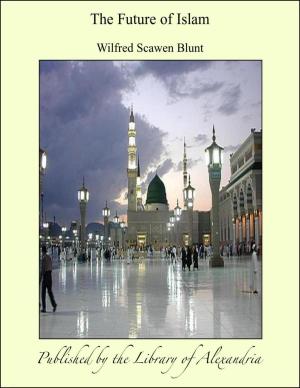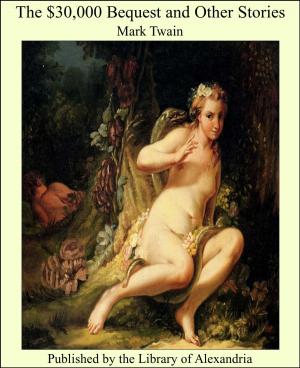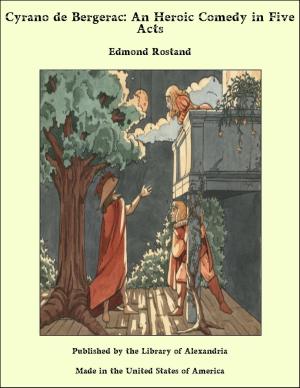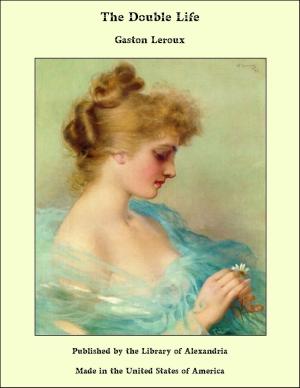| Author: | Mrs. Alick Macleod | ISBN: | 9781465606655 |
| Publisher: | Library of Alexandria | Publication: | March 8, 2015 |
| Imprint: | Language: | English |
| Author: | Mrs. Alick Macleod |
| ISBN: | 9781465606655 |
| Publisher: | Library of Alexandria |
| Publication: | March 8, 2015 |
| Imprint: | |
| Language: | English |
It was one Sunday afternoon in the middle of December and in the province of South Australia. The grass was withered almost to the roots, fast turning gray and brown. Indeed, along the barer ridges of the beautiful hills that rise in serried ranks to the east of Adelaide, the herbage was already as dry and bleached as carded flax. In the gullies, thickly timbered and lying in perpetual shade, the ground still retained the faint graying green distinctive of Australian herbage in a state of transition from spring verdure to summer drought. But soon even the shadiest recesses would bear witness to the scorching dryness of the season. For even before the middle of this first month of summer, two or three of those phenomenal days had come which furnish anecdotes for many successive months alike to the weather statist and the numerous class who cultivate community of soul by comparing experiences of those dreadful days on which 'the hall thermometer stood at 104° before noon.' This Sunday had not quite been one of the days that make the oldest residents turn over heat averages extending to the early dawn of the country's history. But, nevertheless, it was a very hot, still day, without a breath of wind stirring, and in the distance that faint shimmering bluish haze which, to the experienced eye, tells its own tale of days to come. The masses of white, silver and messmate gum-trees that clothe these same Adelaide hills so thickly, formed a grateful resting-place for the eye, wearied with the steadfast glare of sunshine. So did the vineyards that dot their declining slopes, and the gardens and orchards that are scattered broadcast to the east of the town. But even Adelaide itself is interwoven with the foliage of trees, which do so much to mitigate, both for eye and body, the severities of a semi-tropical climate. This fascinating embroidery of trees is more especially observable in glancing over North Adelaide. This extensive and important suburb, which is divided from Adelaide proper by the Torrens Lake and Park Lands, lies considerably above the city and adjacent suburbs. So large a proportion of the houses are surrounded by gardens, that from some points of view North Adelaide looks like a well-trimmed wood, thickly studded with houses. And these gardens are, as a rule, neither suburban slips, with precocious trees selected for their speedy power of growth, nor the painfully pretentious enclosures which auctioneers delight to term 'grounds.' No, they are genuine gardens—roomy, shadowy, well planted, well watered; rich in flowers and many fruit-trees, bending in due season under their fertile loads; haunted with the hum of rifling bees, fragrant with the perfume of old-world blossoms. In such a garden on this Sunday afternoon a young man and woman were slowly pacing up and down a broad central walk, thickly trellised with vines. The gadding tendrils, the wealth of wide emerald leaves, the countless oval clusters of ripening grapes—Crystal, Black Prince, and delicate Ladies' Fingers—which clothed the trellis on the sides and overhead, made a delightful picture. So did the great rose-trees hard by, garlanded after their kind with pale pink, yellow, white and blood-red roses. Parallel with this vine arcade there were loquat trees loaded with thick clusters of clear-skinned creamy fruit, and orange-trees, with dark-green globes nestling among glossy boughs, sheeted in waxen blossoms, whose penetrating odour loaded the atmosphere. But as so often happens when a young man and woman are engaged in a tête-à-tête, neither the objects round them nor any topic of wide social importance engrossed their attention.
It was one Sunday afternoon in the middle of December and in the province of South Australia. The grass was withered almost to the roots, fast turning gray and brown. Indeed, along the barer ridges of the beautiful hills that rise in serried ranks to the east of Adelaide, the herbage was already as dry and bleached as carded flax. In the gullies, thickly timbered and lying in perpetual shade, the ground still retained the faint graying green distinctive of Australian herbage in a state of transition from spring verdure to summer drought. But soon even the shadiest recesses would bear witness to the scorching dryness of the season. For even before the middle of this first month of summer, two or three of those phenomenal days had come which furnish anecdotes for many successive months alike to the weather statist and the numerous class who cultivate community of soul by comparing experiences of those dreadful days on which 'the hall thermometer stood at 104° before noon.' This Sunday had not quite been one of the days that make the oldest residents turn over heat averages extending to the early dawn of the country's history. But, nevertheless, it was a very hot, still day, without a breath of wind stirring, and in the distance that faint shimmering bluish haze which, to the experienced eye, tells its own tale of days to come. The masses of white, silver and messmate gum-trees that clothe these same Adelaide hills so thickly, formed a grateful resting-place for the eye, wearied with the steadfast glare of sunshine. So did the vineyards that dot their declining slopes, and the gardens and orchards that are scattered broadcast to the east of the town. But even Adelaide itself is interwoven with the foliage of trees, which do so much to mitigate, both for eye and body, the severities of a semi-tropical climate. This fascinating embroidery of trees is more especially observable in glancing over North Adelaide. This extensive and important suburb, which is divided from Adelaide proper by the Torrens Lake and Park Lands, lies considerably above the city and adjacent suburbs. So large a proportion of the houses are surrounded by gardens, that from some points of view North Adelaide looks like a well-trimmed wood, thickly studded with houses. And these gardens are, as a rule, neither suburban slips, with precocious trees selected for their speedy power of growth, nor the painfully pretentious enclosures which auctioneers delight to term 'grounds.' No, they are genuine gardens—roomy, shadowy, well planted, well watered; rich in flowers and many fruit-trees, bending in due season under their fertile loads; haunted with the hum of rifling bees, fragrant with the perfume of old-world blossoms. In such a garden on this Sunday afternoon a young man and woman were slowly pacing up and down a broad central walk, thickly trellised with vines. The gadding tendrils, the wealth of wide emerald leaves, the countless oval clusters of ripening grapes—Crystal, Black Prince, and delicate Ladies' Fingers—which clothed the trellis on the sides and overhead, made a delightful picture. So did the great rose-trees hard by, garlanded after their kind with pale pink, yellow, white and blood-red roses. Parallel with this vine arcade there were loquat trees loaded with thick clusters of clear-skinned creamy fruit, and orange-trees, with dark-green globes nestling among glossy boughs, sheeted in waxen blossoms, whose penetrating odour loaded the atmosphere. But as so often happens when a young man and woman are engaged in a tête-à-tête, neither the objects round them nor any topic of wide social importance engrossed their attention.















